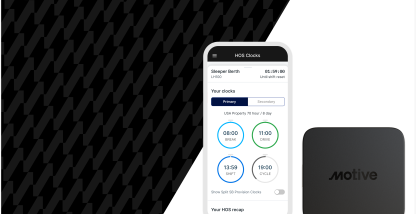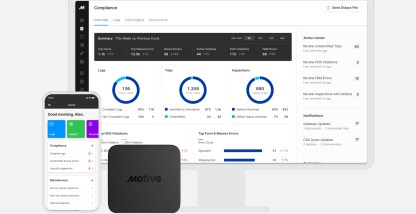The Texas ELD mandate is fast approaching — the deadline is Dec. 16, 2019.
Intrastate drivers will need to install compliant electronic logging devices by the December deadline, which is also the same date when the AOBRD grandfather clause expires in the federal regulation.
Details around enforcement
The deadline is just a handful of months away but what about the actual enforcement of this mandate? Based on the previous ELD mandates (between Dec. 18, 2017 and April 1, 2018), the industry experienced a soft enforcement period. This meant that drivers without ELDs were not put out of service.
Chris Nordloh, who is a Major at the Texas Department of Public Safety, told Motive in an email, “Enforcement personnel are encouraged to use good judgment in enforcing regulations, however [out of service] criteria will be strictly observed.”
This means they fully intend to enforce the regulation on Dec. 17, 2019. There will be no grace period for interstate commercial drivers in Texas, and violations will mean out-of-service orders, hefty fines, and other consequences that may affect your business.
Intrastate drivers in Texas should not expect any soft enforcement period.
Interstate vs. intrastate
It might be confusing to understand what constitutes interstate and intrastate. As the operator, you would be responsible for knowing which rules apply to you.
When it comes to the difference between interstate and intrastate, the most important thing to remember is the load.
We all know that crossing state lines is interstate movement. However, if your freight crosses state lines — even if you never do — that would still be considered an interstate movement.
Intrastate commerce specifically deals with loads that originate and end within the state boundary, e.g., moving furniture that was created in Alpine to Corpus Christi in Texas.
Intrastate drivers will need compliant ELDs from Dec. 16, 2019.
Exceptions to the ELD mandate in Texas
There are some exceptions to the ELD mandate in Texas, including the following:
- Short-haul drivers who drive within a 150 air-mile radius and return to the reporting location within 12 hours
- Certain drive-away tow away operations
- Vehicles with engines manufactured before the year 2000
How to get ready and remain compliant
Transition to ELDs will take time.
Vetting different ELD solutions, purchasing, installing, onboarding, and driver training takes time. Drivers and back-office staff are being asked to shift their mode of operation and need time to get familiar with how the device operates, which documents to carry, and what to do during roadside inspections.
Ensure your fleet’s smooth transition and start today with Motive’s. We have a robust onboarding process to ensure your fleet is set up properly and compliant.
This ensures there are no surprises before the deadline, and your fleet’s productivity doesn’t take a hit during the transition process.
Learn more about the Motive compliance solution.









